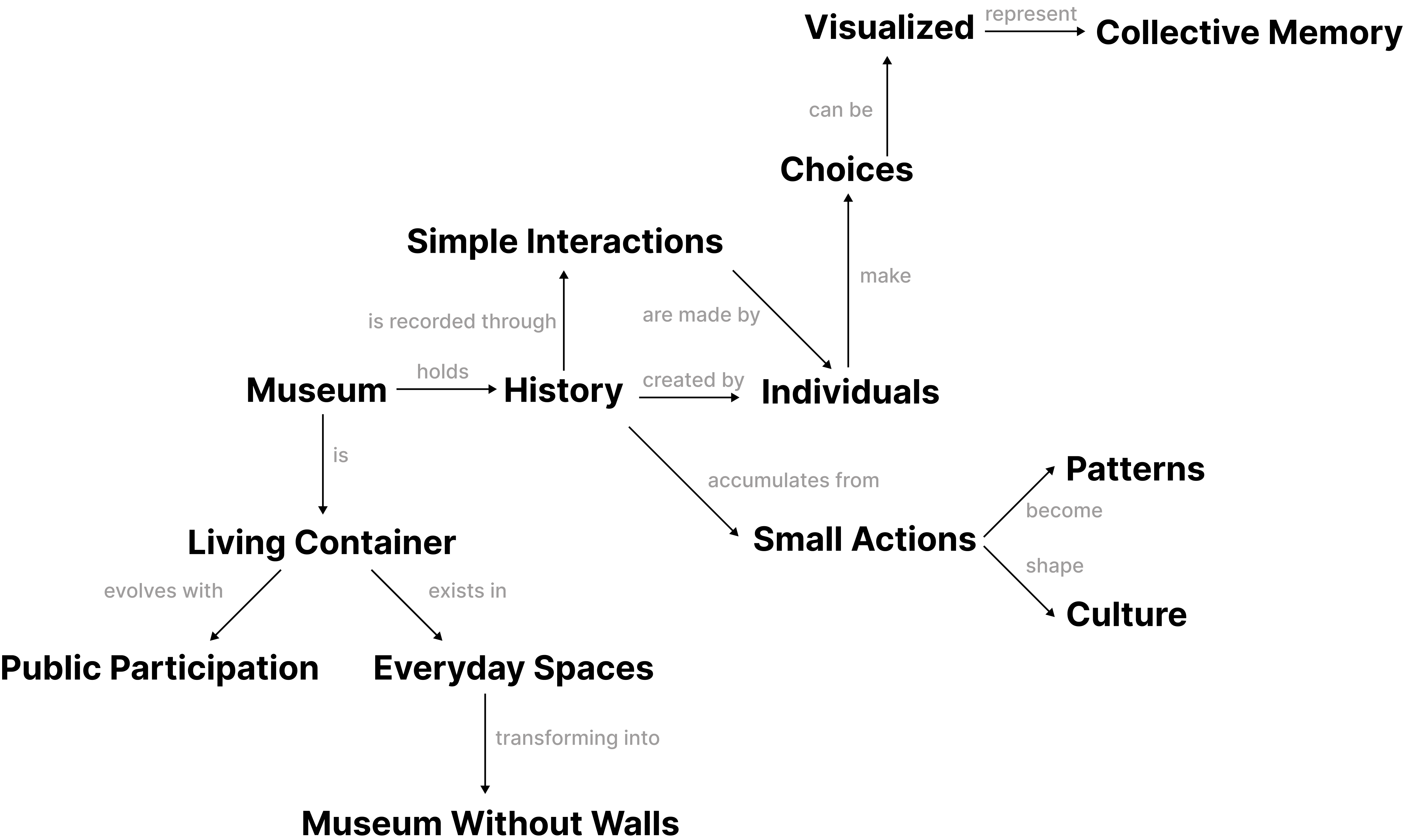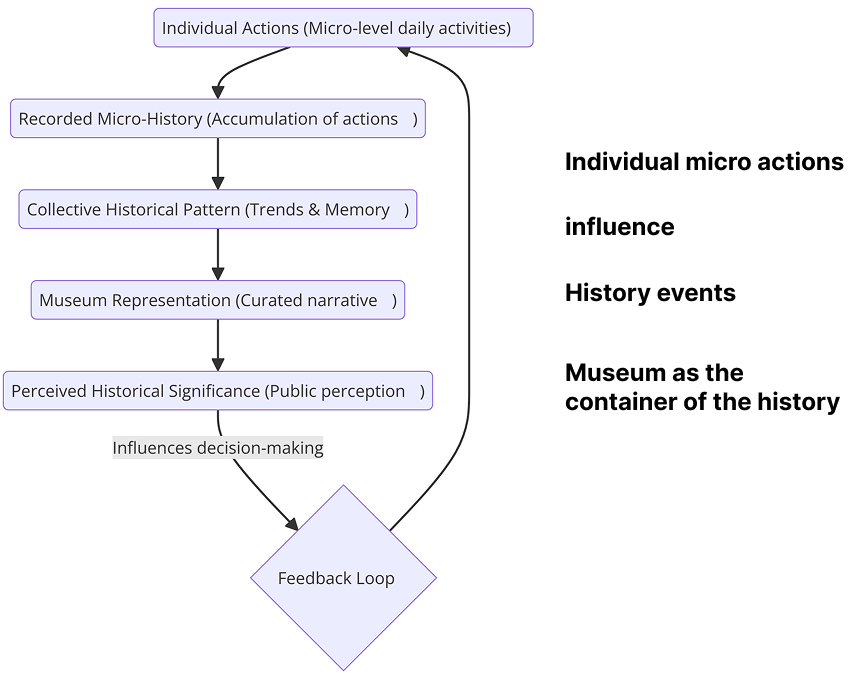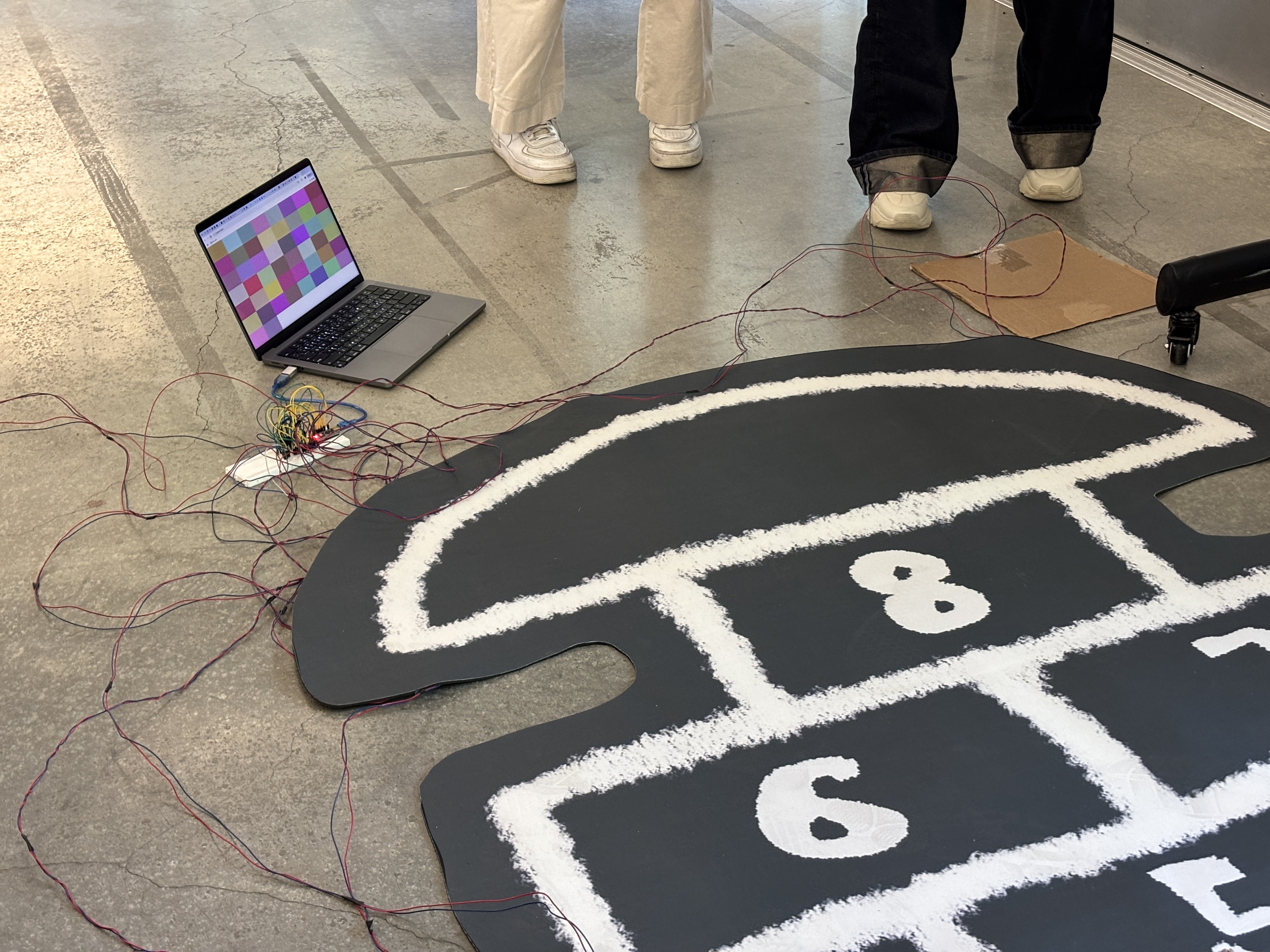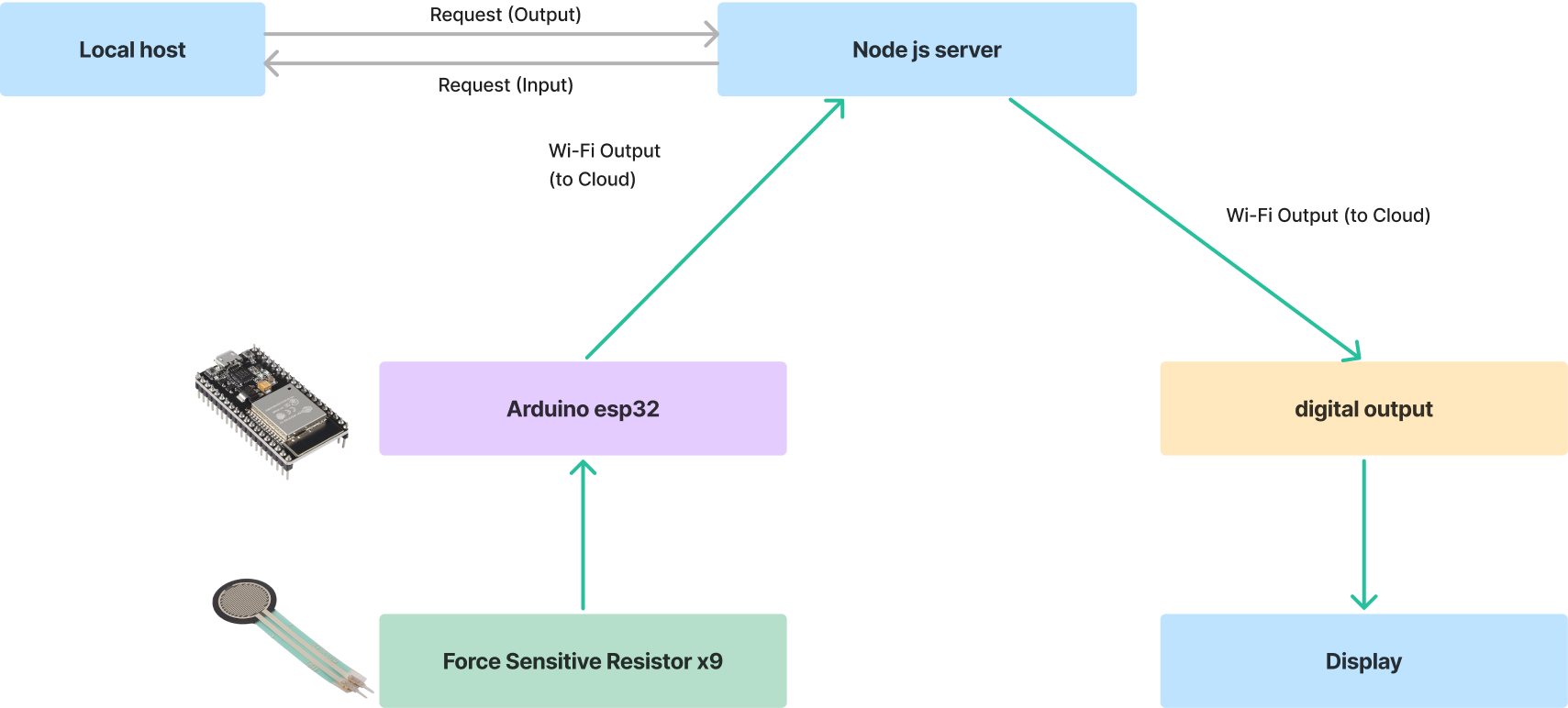Users step on pressure-sensitive tiles embedded in a public space. Each step triggers a short, AI-generated historical event based on past participants’ actions. Over time, the floor evolves as more people participate, revealing new collective "memories."
As people walk past a sensor-based screen, it captures their movement as shadow silhouettes. These shadows remain temporarily, overlapping with previous visitors, creating a layered time-lapse effect. The installation visualizes collective human presence in a space over time.
Users drop a physical object (stone, coin, or digital tag) into a smart fountain. The fountain responds with a visual and sound pattern unique to that object. The water remembers past drops, creating a growing pattern of collective contributions.
We design a hopscotch grid drawn with chalk on the street, where passersby unconsciously engage in play. Each jump represents a choice, analogous to micro-historical events driven by human activities.
This device provides questions that has two options. After collecting participants' answers, this system would generate an image based on selections of each steps.
A public wall that records and plays back whispered messages from past visitors. Participants speak a word or phrase, and their voice becomes part of the evolving "sound museum."












